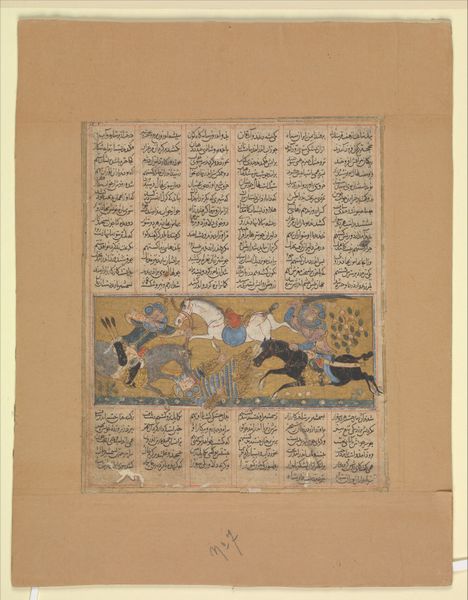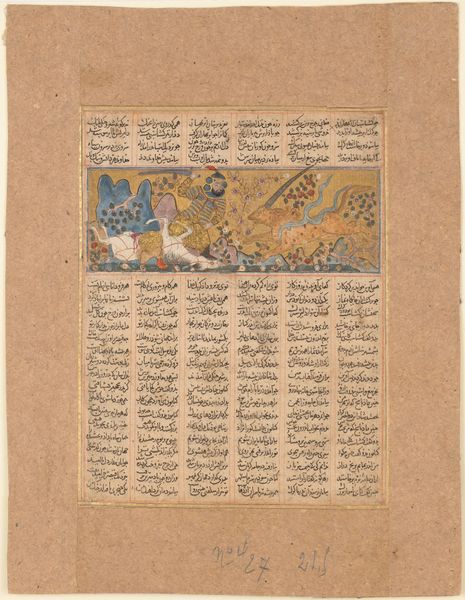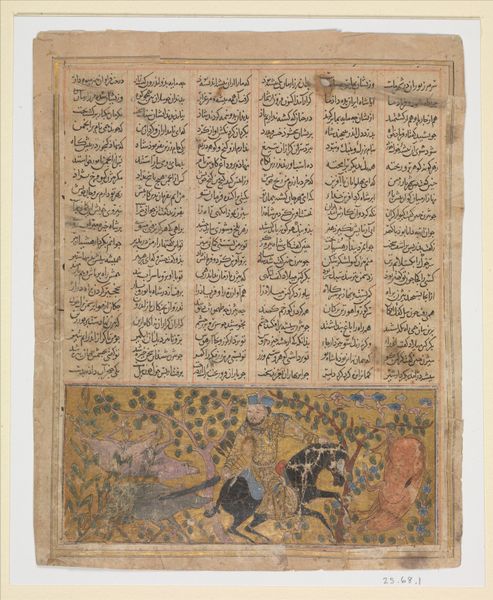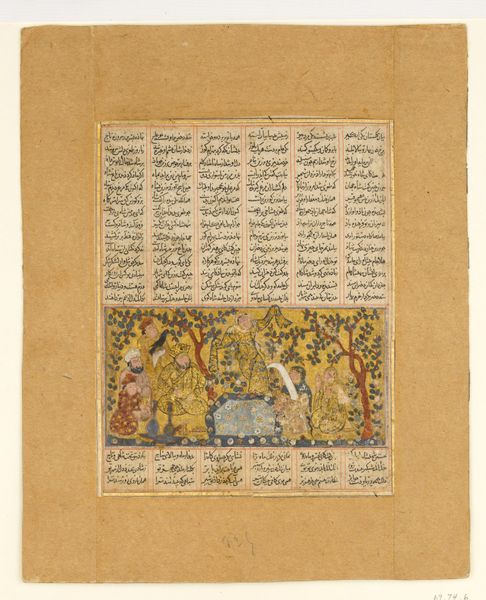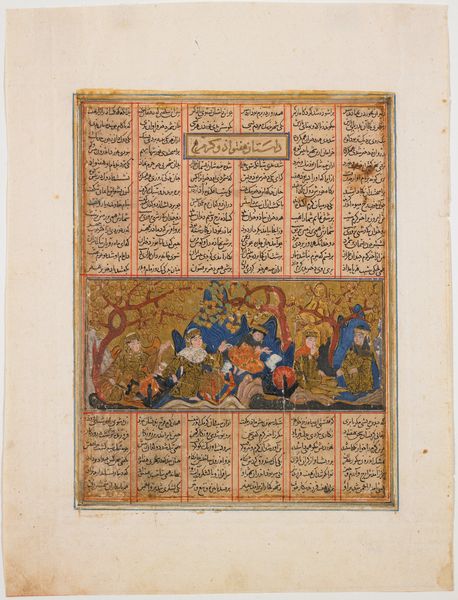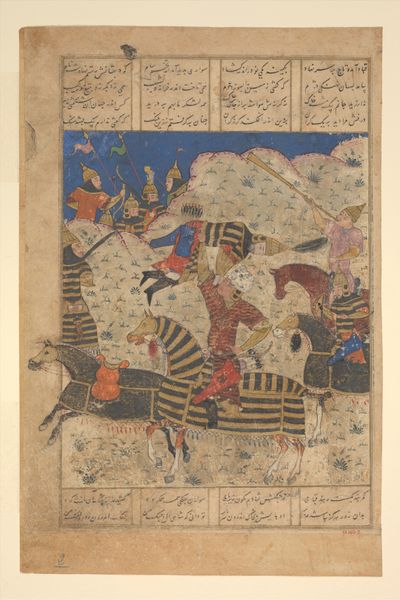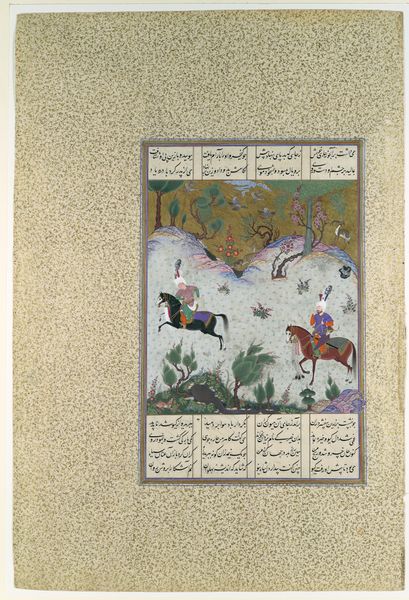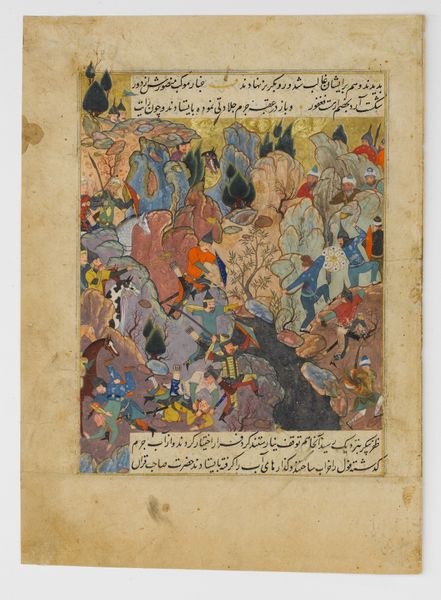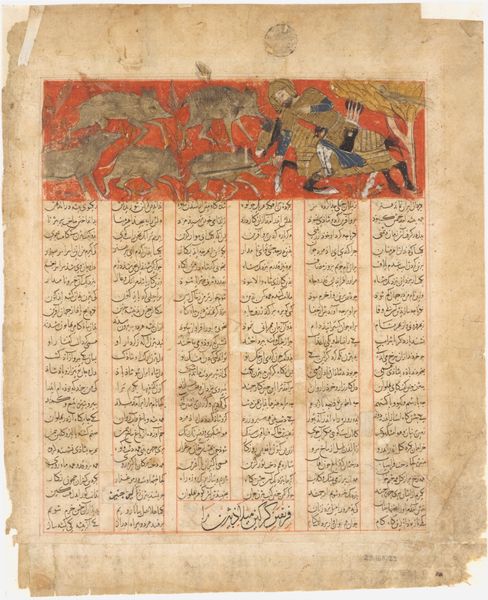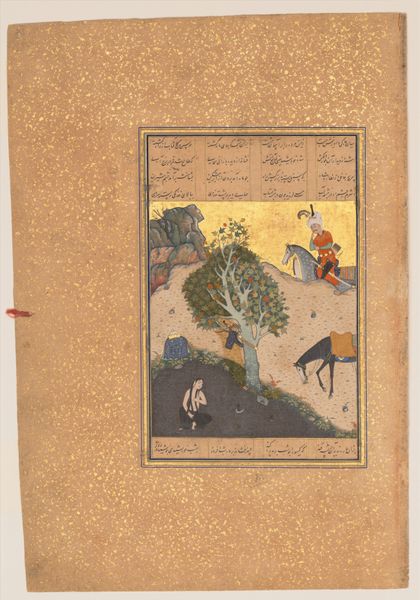
"Bahram Chubina Kills the Lion-Shaped Ape Monster", Folio from a Shahnama (Book of Kings) 1275 - 1355
0:00
0:00
painting, watercolor
#
narrative-art
#
painting
#
figuration
#
watercolor
#
islamic-art
#
watercolour illustration
#
miniature
Dimensions: Text block: H. 6 5/16 in. (16 cm) W. 5 in. (12.7 cm) Painting: H. 1 15/16 in. (5 cm) W. 5 1/2 in. (14 cm)
Copyright: Public Domain
Curator: Look at this dynamic scene! This watercolor painting, likely created between 1275 and 1355, is a folio from a Shahnama, or "Book of Kings," attributed to Abu'l Qasim Firdausi. It's called "Bahram Chubina Kills the Lion-Shaped Ape Monster". It currently resides in the Metropolitan Museum of Art. Editor: The instant impression I get is of raw, unleashed energy. The composition is almost frantic, with the horse and monstrous ape locked in this frenzied, circular motion. Curator: Precisely. Shahnama illustrations frequently portrayed tales of heroism and fantastical encounters. Here, Bahram Chubina, a renowned hero from Persian folklore, confronts this terrifying, lion-ape hybrid, highlighting his bravery and strength. Notice the minute details in the hero's patterned tunic, the horse's tack, even the florets dotting the background. The landscape and dress denote this artwork's Persian, Islamic context. Editor: Agreed, but what strikes me most is the flattened perspective and the stylized representation. It defies naturalism in favor of decorative impact. The figures are outlined in a bold contour, their forms simplified and rendered in flat planes of color. There is also a lot of decorative repetition used to enhance the design of the monster itself, especially in its fur. Curator: That's characteristic of miniature painting from this period. The picture plane operates less as a window onto reality and more as a surface for pattern and storytelling. Consider the inclusion of text panels above and below the image – an integral part of the artwork, providing a literary context for the visual narrative. They’re not merely decorative. Editor: Yes, they create a fascinating tension, the static text framing this scene bursting with dynamism. The red blossoms intertwined around the monster introduce an interesting touch; their stark contrast catches the eye. Are these symbolic elements in their construction or are they mere stylizations? Curator: Likely both. Color symbolism held significance, but within the constraints of available pigments and the patron’s preferences. This piece also illuminates the sociopolitical environment that would cause it to arise. After all, these were meant to impress noblemen and elites. Editor: It's a compelling intersection of storytelling and design! Seeing the hero represented in this stylized and frenetic moment in time provides a rich perspective. Curator: Indeed, and considering its cultural context deepens our appreciation for the Shahnama as not only literature but also visual spectacle with commentary and deep seeded values.
Comments
No comments
Be the first to comment and join the conversation on the ultimate creative platform.
